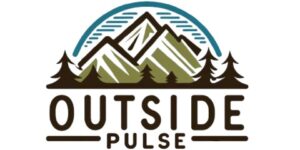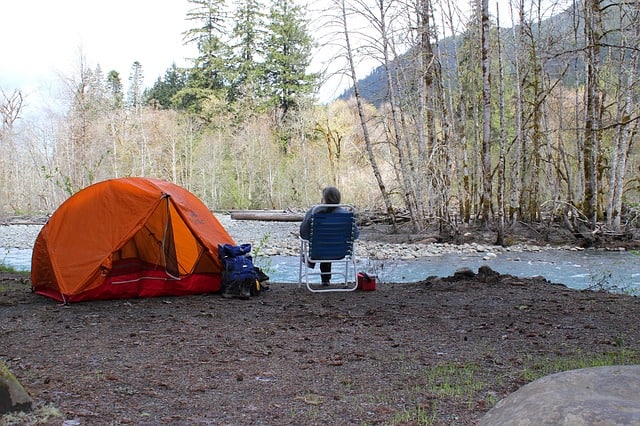There are many factors to consider when putting together the best camping setup. Think of your camping setup and campsite as the foundation for your entire camping experience. Just like a house foundation if you don’t have a solid base and structure for camping you are sure to run into issues and problems while camping.
When evaluating or creating your best camping setup it’s important to keep a few important criteria in mind, such as location, amenities, and natural resources.
Best Camping Setup: Campsite Location
Of all the things to keep in mind while picking out or setting up your best camping setup, location is probably the most important. Because if you choose a poor location you’ll be fighting an uphill battle the entire time.
Have the High Ground and Find a Shady Spot
The first thing to look for is the campsite elevation and the elevation of the surrounding area. Pick a campsite that has the high-ground compared to the surrounding area. While it might be a perfectly sunny day when setting up your campsite a quick downpour or rainy day can turn the surrounding area into a muddy mess. So by picking a higher elevation for your campsite, you will stay dry longer and dry out faster compared to the surrounding area.
It’s also important to find a campsite that has plenty of shade to escape the scorching sun. Shade on average feels between 10 and 15 degrees cooler compared to standing in direct sunlight. Even on the hottest summer days by staying in the shade and having your tent in the shade you will stay substantially cooler and more comfortable while camping.
Camp Neighbors
Another thing to keep in mind while choosing the perfect campsite especially if camping in a campground is the neighbors surrounding you. It really depends on what type of experience you hope to achieve when it comes to camping neighbors. If you are seeking peace and solitude its best to avoid campsites with large groups of people with a ton of kids.
On the other hand, if you have your own children and or getting into to camping to meet more like-minded people neighboring campsites with large groups and a ton of kids might just be a perfect fit.
Know the Direction of the Wind
Knowing the direction of the wind while camping can be critical especially during particularly windy days due to campfire smoke. You want to set your campsite in a location that will prevent you from having to suck down your own campfire smoke or worse yet your neighbor’s campfire smoke.
Campsite Amenities
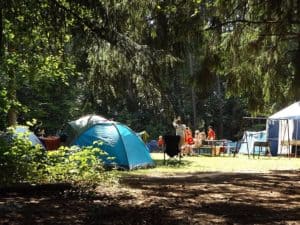 Whether you are dispersed camping which means to camp anywhere outside of a designated campground or camping at a designated campsite it’s important to be aware and know what amenities and resources are around your campsite.
Whether you are dispersed camping which means to camp anywhere outside of a designated campground or camping at a designated campsite it’s important to be aware and know what amenities and resources are around your campsite.
If you are dispersed camping off grid in the backcountry then resources could mean access to a water source such as a small creek or a natural spring. Or it could be access to resources to start and maintain a campfire. When dispersed camping and away from immediate help and people campsite amenities and resources can be extremely important. So when picking out a campsite on raw land or wilderness look for an area that has access to fresh water, campfire material, or a natural break or shelter from the elements.
If camping at a campground or a designated campsite amenities and resources can take on a whole other meaning compared to an off-grid grid or dispersed campsite.
Many modern campgrounds have accesses to amenities and resources that rival what you might find in your own homes such as running water, electricity, bathrooms and showers, and even cable tv!
While the whole point of camping is to get back to nature and to simplify life there is nothing wrong with being aware of and mindful of campground amenities and picking a campsite accordingly.
Especially if you are a brand new camper and a little unsure of yourself when first starting out. Having access to running water and electricity and bringing a few creature comforts from home can help put your mind at ease in order to enjoy nature and the act of camping more without having to worry about every basic necessity.
Best Camping Setup: Basic Layout and Design
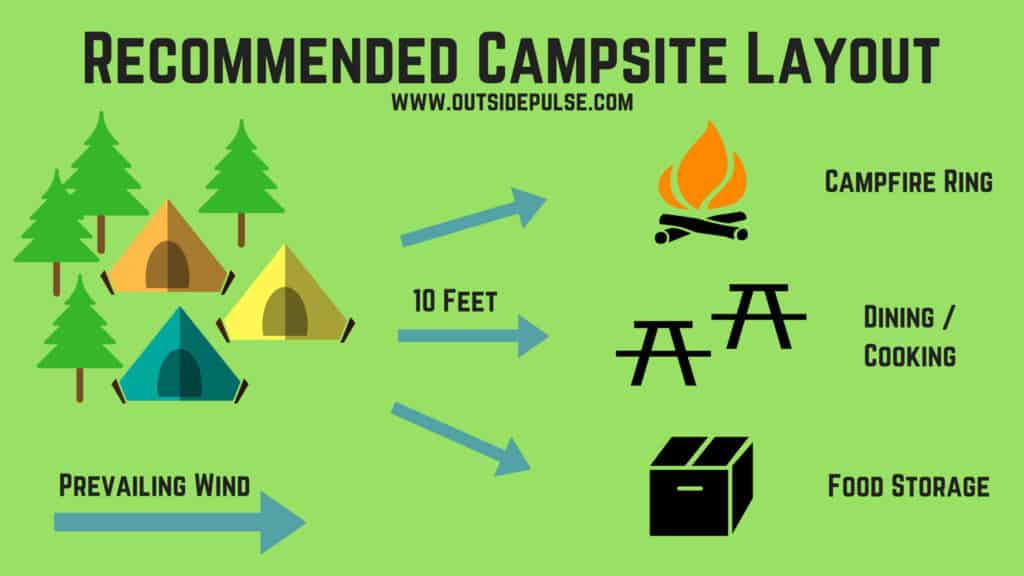
When setting up your campsite there are a few things that you need to keep in mind.
Campfire Placement
The first thing to consider is where you are going to place the campfire, as typically the campfire serves as the central point of a campsite much like a fireplace does for a home.
When picking out a location for your campfire make sure that you have plenty of clearance on all sides and your campfire is at least 10 feet away from tents, camping equipment, food storage, trees, and brush or ground cover.
Best Tent Location While Camping
The next item to set up and pick a location for is the tent or sleeping area. As mentioned above you want to find a shady spot for your tent which will help keep your tent cool during the daytime. Don’t forget to watch out for widowmakers though when selecting a location for your tent. Meaning do not set your tent up or near trees, limbs, or branches that appear to be dying or dead, as they might unexpectedly fall causing injury or worse.
The last thing to keep in mind before picking your tent location is the direction of the prevailing winds. This is important because you want to make sure that you are upwind from your campfire so that you are not breathing in campfire smoke the entire time.
Campsite Cooking and Dining Areas
When setting up a campsite cooking and or dining area around your campsite many of the same things that apply for tent placement are also applicable to cooking and dining areas. Make sure that these areas are at least 10 feet away from the campfire and they are also upwind from the campfire.
Things to Know About Food Storage While Camping
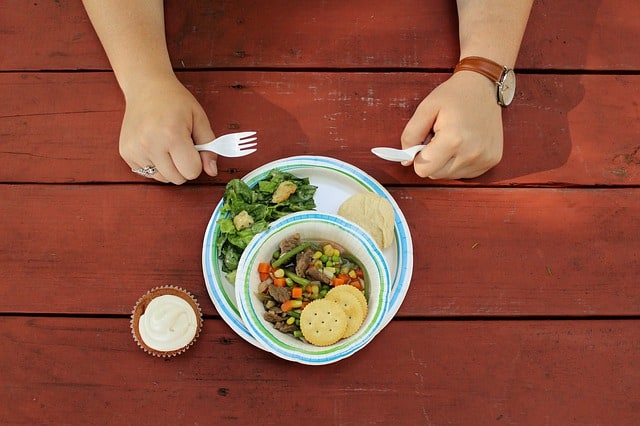 The final item that needs a location and place around the campsite is your food storage area. Anytime you bring food into the wild or nature your campsite becomes a homing beacon for all sorts of wildlife and animals. So it’s a good idea to follow some basic and simple rules when it comes to food storage around the campsite.
The final item that needs a location and place around the campsite is your food storage area. Anytime you bring food into the wild or nature your campsite becomes a homing beacon for all sorts of wildlife and animals. So it’s a good idea to follow some basic and simple rules when it comes to food storage around the campsite.
The most important thing to remember is that the more you can mask or conceal the order or smell of food the better. Consider storing all of your food in airtight containers or coolers even items that do not need to be kept cold. If you are camping at a campground, the worst animal you might encounter is a raccoon or maybe a stray dog. But if camping in the wild, especially in bear country food storage, takes on a much more important and vital role.
It’s a good idea to store your food away from your sleeping area no matter where your camping. However, if you are camping in the wild or bear country it is best to keep any food supplies at least 200 feet away from your tent and sleeping area as well as any other part of your campsite. Also, it’s a good idea if in an area that might have bears to store your food in a bear bag which is basically a sack or bag containing all of your food that you suspend in a tree at least 10 feet off the ground using a rope.
By following these simple food storage rules you lessen the likelihood of having an unfortunate encounter with animals looking for a free meal.
